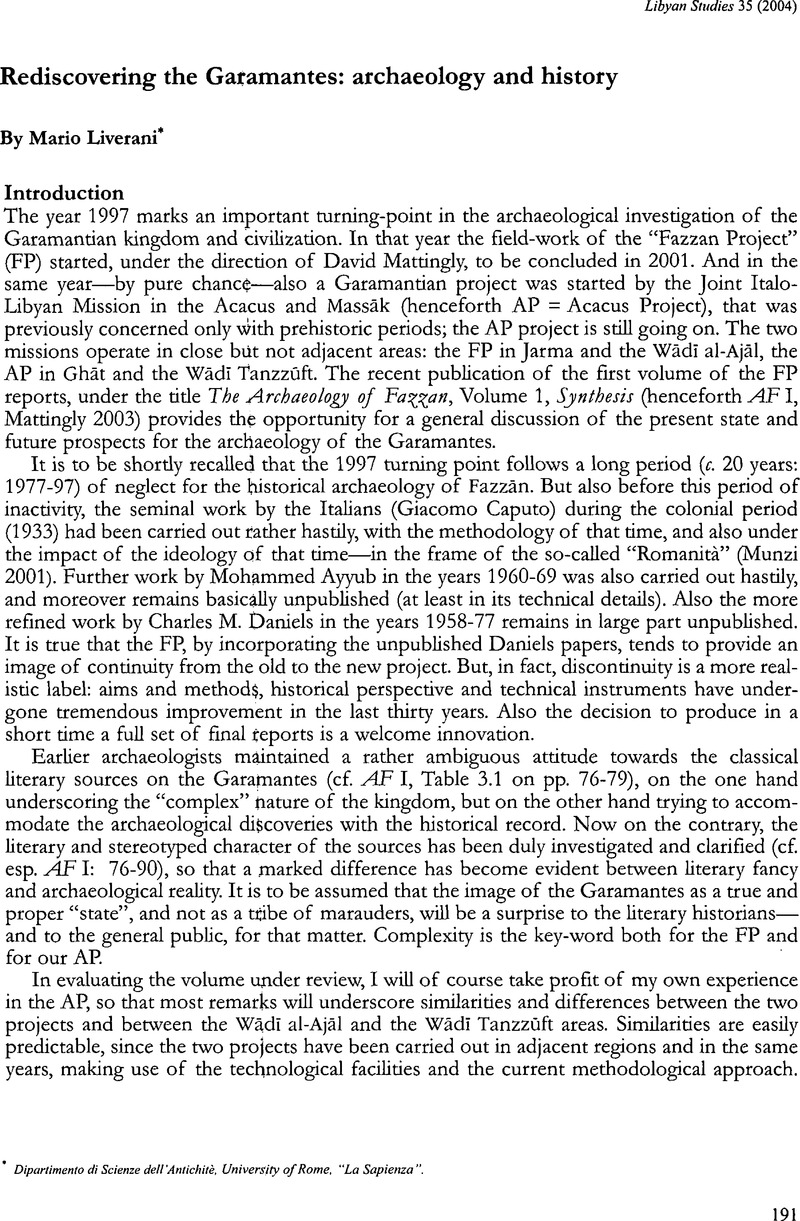Crossref Citations
This article has been cited by the following publications. This list is generated based on data provided by Crossref.
Cremaschi, Mauro
and
Zerboni, Andrea
2009.
Early to Middle Holocene landscape exploitation in a drying environment: Two case studies compared from the central Sahara (SW Fezzan, Libya).
Comptes Rendus. Géoscience,
Vol. 341,
Issue. 8-9,
p.
689.
Cremaschi, Mauro
and
Zerboni, Andrea
2010.
Landscapes and Societies.
p.
67.
Sterry, Martin
Mattingly, David
Ahmed, Muftah
Savage, Toby
White, Kevin
and
Wilson, Andrew
2011.
DMP XIII: Reconnaissance Survey of Archaeological Sites in the Murzuq Area.
Libyan Studies,
Vol. 42,
Issue. ,
p.
103.
Cremaschi, Mauro
2014.
When did the Anthropocene begin? A geoarchaeological approach to deciphering the consequences of human activity in pre-protohistoric times: selected cases from the Po Plain (northern Italy).
Rendiconti Lincei,
Vol. 25,
Issue. 1,
p.
101.
Zerboni, Andrea
Bernasconi, Andrea
Gatto, Maria Carmela
Ottomano, Caterina
Cremaschi, Mauro
and
Mori, Lucia
2018.
Building on an oasis in Garamantian times: Geoarchaeological investigation on mud architectural elements from the excavation of Fewet (Central Sahara, SW Libya).
Journal of Arid Environments,
Vol. 157,
Issue. ,
p.
149.
Fentress, Elizabeth
2019.
Burials, Migration and Identity in the Ancient Sahara and Beyond.
p.
495.
Petrullo, Giacoma
and
Barich, Barbara E.
2021.
The Bone Artifact Collection from Wadi Ti-n-Torha (Northern Tadrart Akakus, Libya): A Reappraisal Based on Technological Analysis.
African Archaeological Review,
Vol. 38,
Issue. 1,
p.
5.



